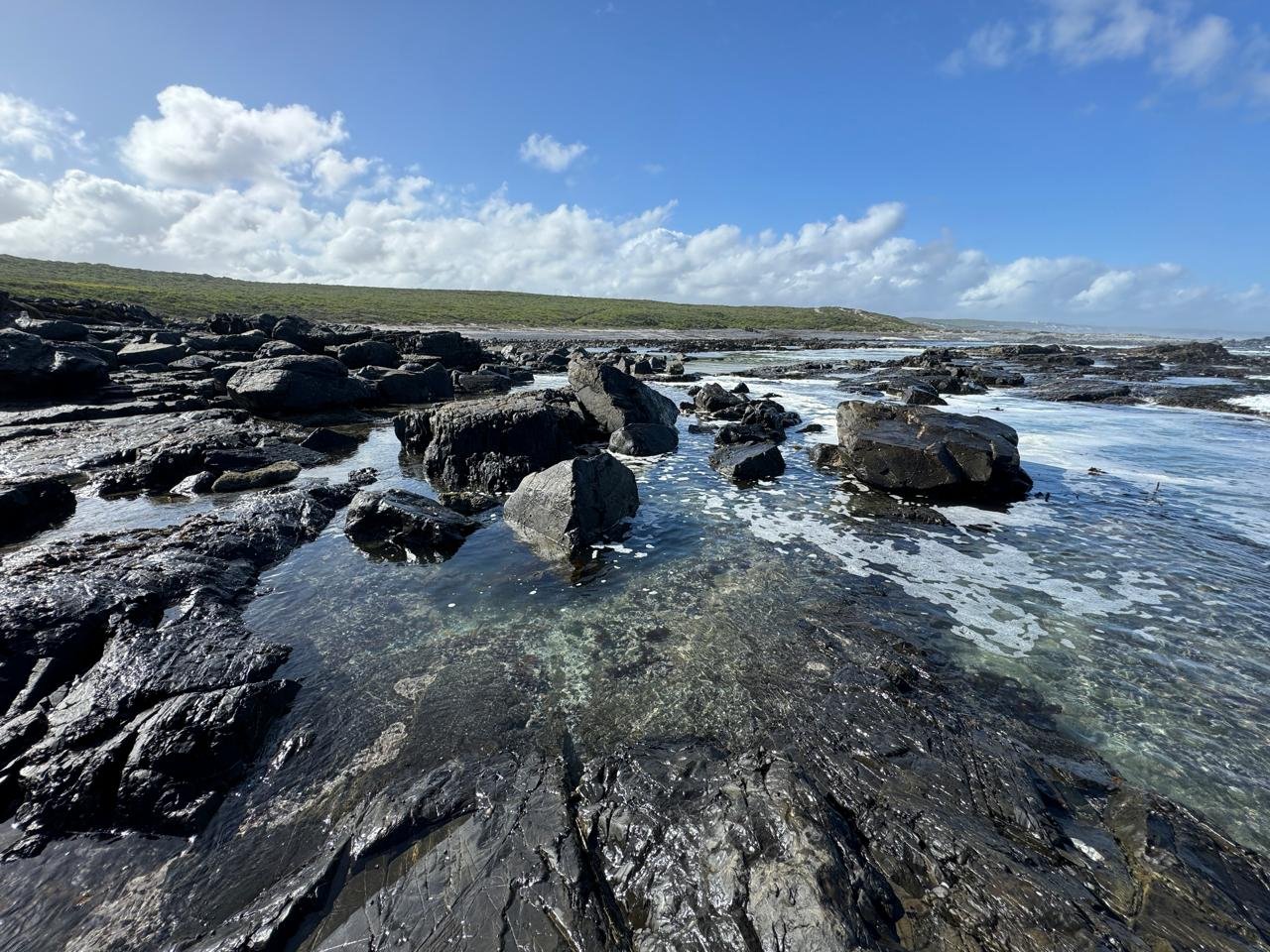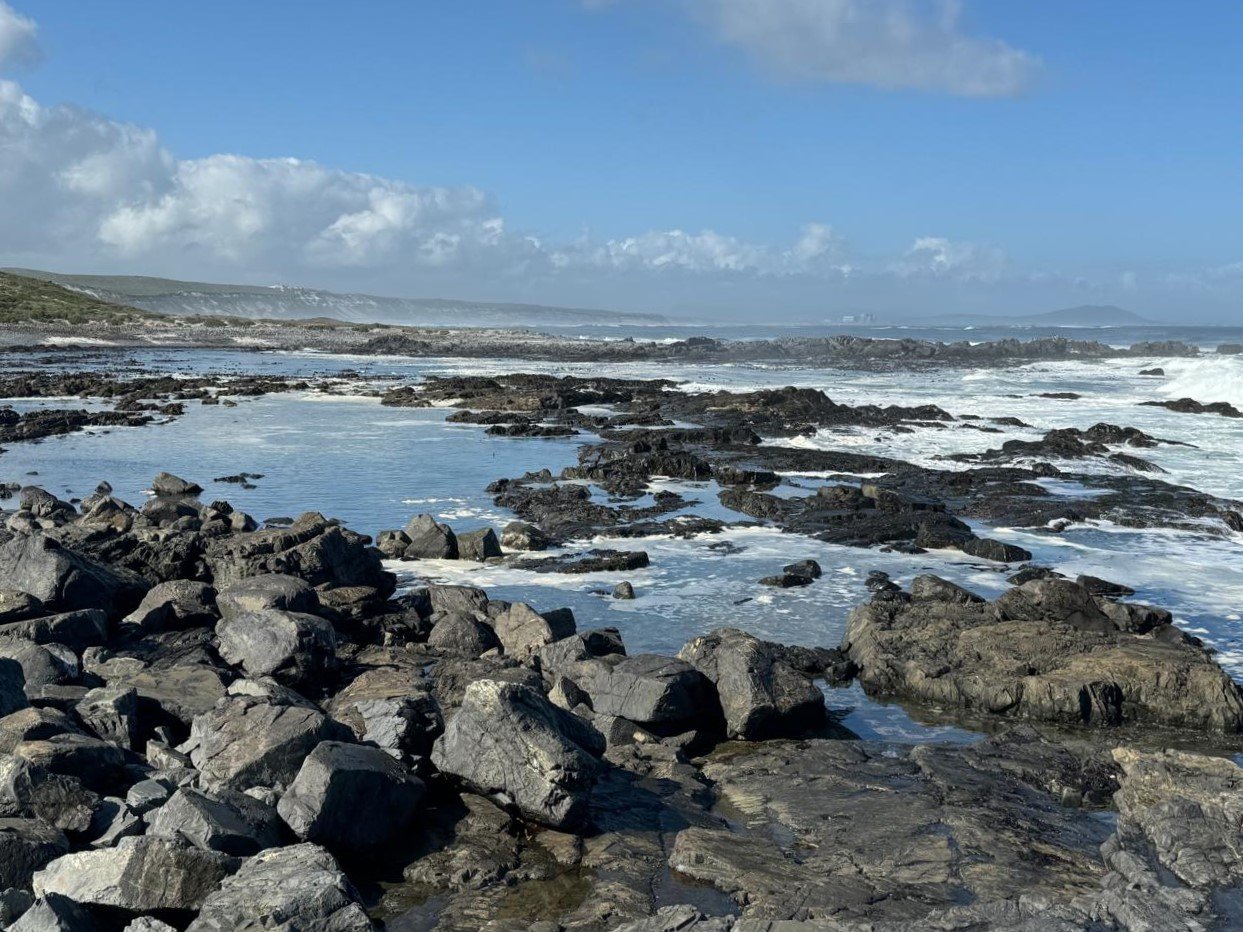Ancient Ingenuity: The Art and Science of Natural Sea Traps
At Springfontein Estate, Pebble Bay stands as a testament to the resourcefulness of our hunter-gatherer ancestors. Here, natural sea traps crafted from beach cobbles and rocks reveal sophisticated techniques used thousands of years ago to harness marine resources. These fish traps, along with the presence of shell middens, highlight a sustainable way of life deeply connected to the rhythms of the ocean. Moreover, the role of ostriches in these ancient communities adds another layer of historical intrigue, showcasing the multifaceted relationship between humans and nature.
Discover how these ancient techniques and the remarkable natural beauty of Pebble Bay continue to inspire and educate us today. Click below to read more.
The hunter-gatherer societies of the past were ingenious in their methods of sourcing food from the environment. One fascinating method that showcases their resourcefulness is the use of natural sea traps. These traps, crafted from the very landscape, provide an intriguing glimpse into the sustainable practices of our ancestors.
The Mechanics of Natural Sea Traps
Natural sea traps, also known as tidal traps, were cleverly constructed to utilize the ebb and flow of tides. These traps often consisted of simple yet effective structures built from rocks or other natural materials. The idea was to create a barrier that would allow fish and other sea creatures to enter during high tide but prevent their escape as the water receded.





One common design was the V-shaped trap, where two rows of rocks or stakes converged into a narrow opening. As the tide came in, fish would swim over the barrier, only to find themselves caught as the water level dropped. These traps were not just limited to fish; they also captured crustaceans, mollusks, and other marine life. At Springfontein Estate Film Location, a particular spot known as "Pebble Bay" exemplifies this natural ingenuity.
The Science Behind the Trap
The effectiveness of these traps lies in their simplicity and reliance on natural tidal cycles. By understanding the behavior of tides and marine animals, ancient communities could ensure a steady supply of food with minimal effort. This sustainable approach minimized the impact on marine populations, allowing ecosystems to thrive alongside human activity.
Lesser-Known Facts about Natural Sea Traps
Historical Evidence: Archaeological findings suggest that natural sea traps were used as far back as the Mesolithic period, over 8,000 years ago. These ancient structures have been discovered along coastlines worldwide, from Africa to Asia and the Americas.
Community Effort: Building and maintaining sea traps often required a collective effort. This communal activity fostered strong social bonds and cooperation among hunter-gatherer groups.
Adaptability: Natural sea traps were adapted to local environments. In rocky coastal areas, stone barriers were prevalent, while in regions with abundant vegetation, woven reed or wooden structures were common.
The Role of Ostriches
Interestingly, some coastal communities also observed the behavior of local wildlife, such as ostriches, in their quest for food. Ostriches, known for their keen eyesight and ability to detect food sources, often led hunter-gatherers to fruitful fishing spots. One such spot on Springfontein Estate Film Location, affectionately known as "Pebble Bay," is where these interactions often took place. Their presence near natural sea traps was seen as a good omen, indicating a successful catch. For more fascinating insights into these remarkable birds, check out our blog on ostriches: The Ostrich: A Marvel of Nature.
Conclusion
Natural sea traps are a testament to human ingenuity and the deep understanding our ancestors had of their environment. These ancient techniques highlight a sustainable way of living that modern societies can learn from. By appreciating the simplicity and efficiency of natural sea traps, we gain a greater respect for the resourcefulness of hunter-gatherer communities and their harmonious relationship with nature. The legacy of these methods, preserved in places like "Pebble Bay" at Springfontein Estate Film Location, continues to inspire and educate us today.






